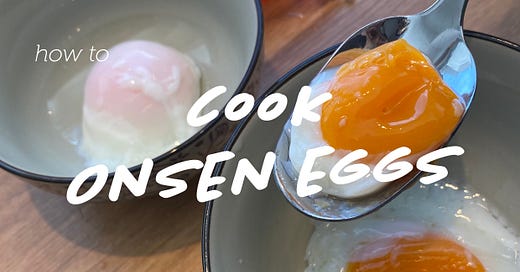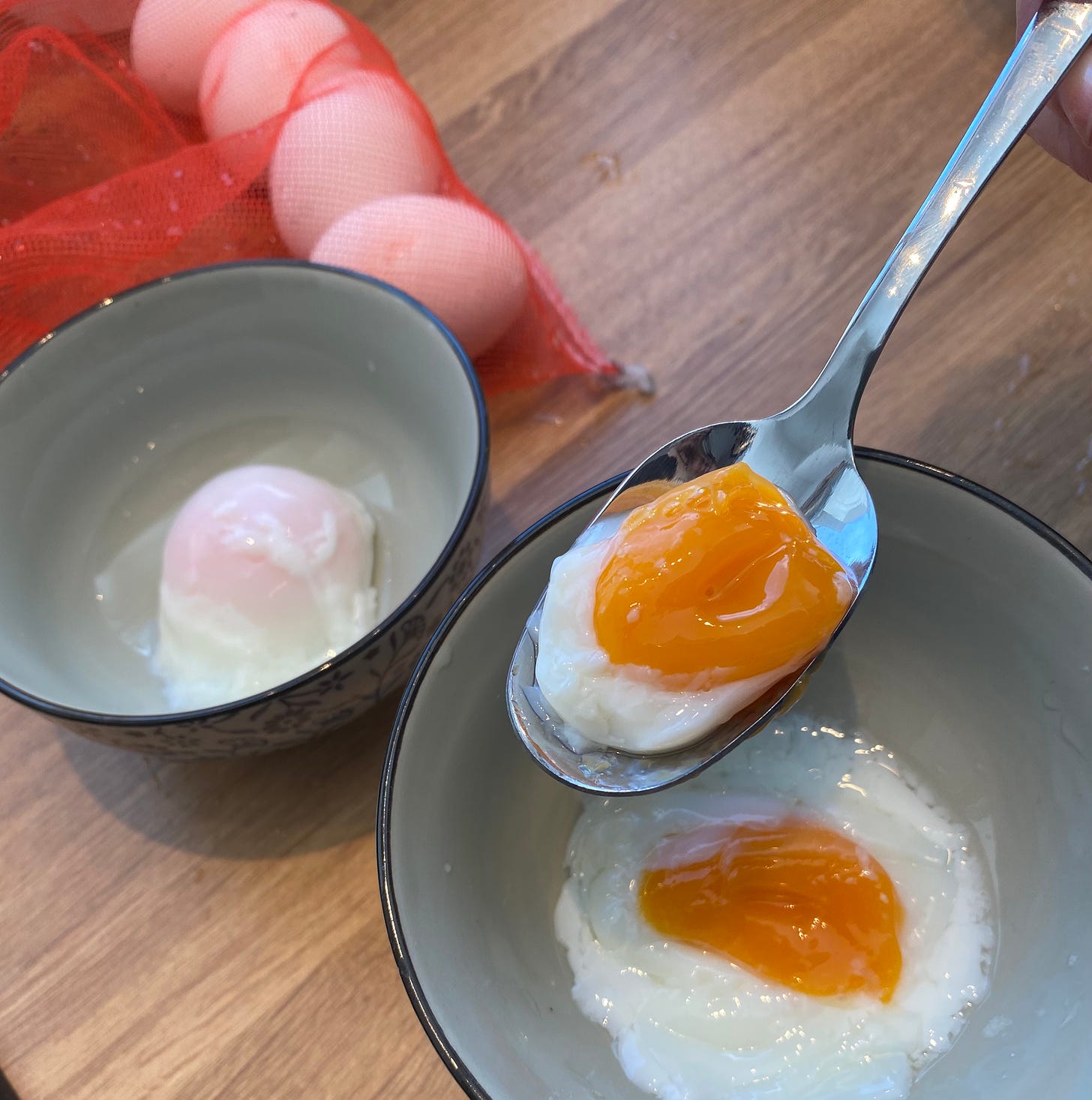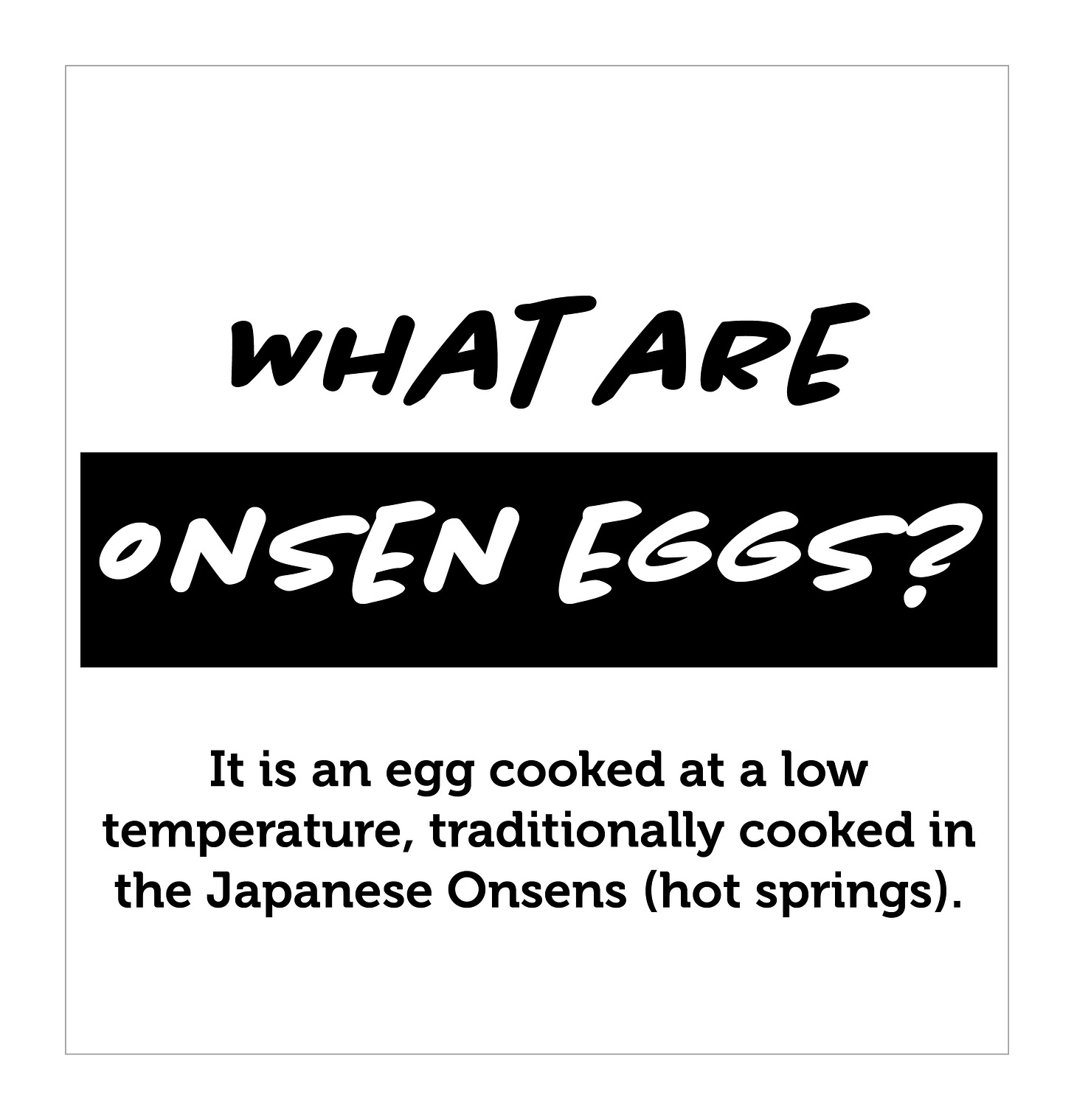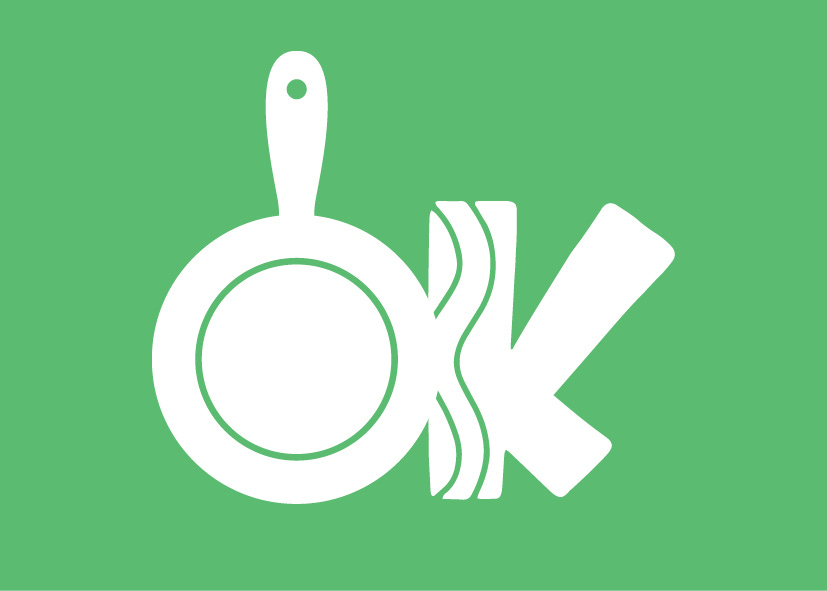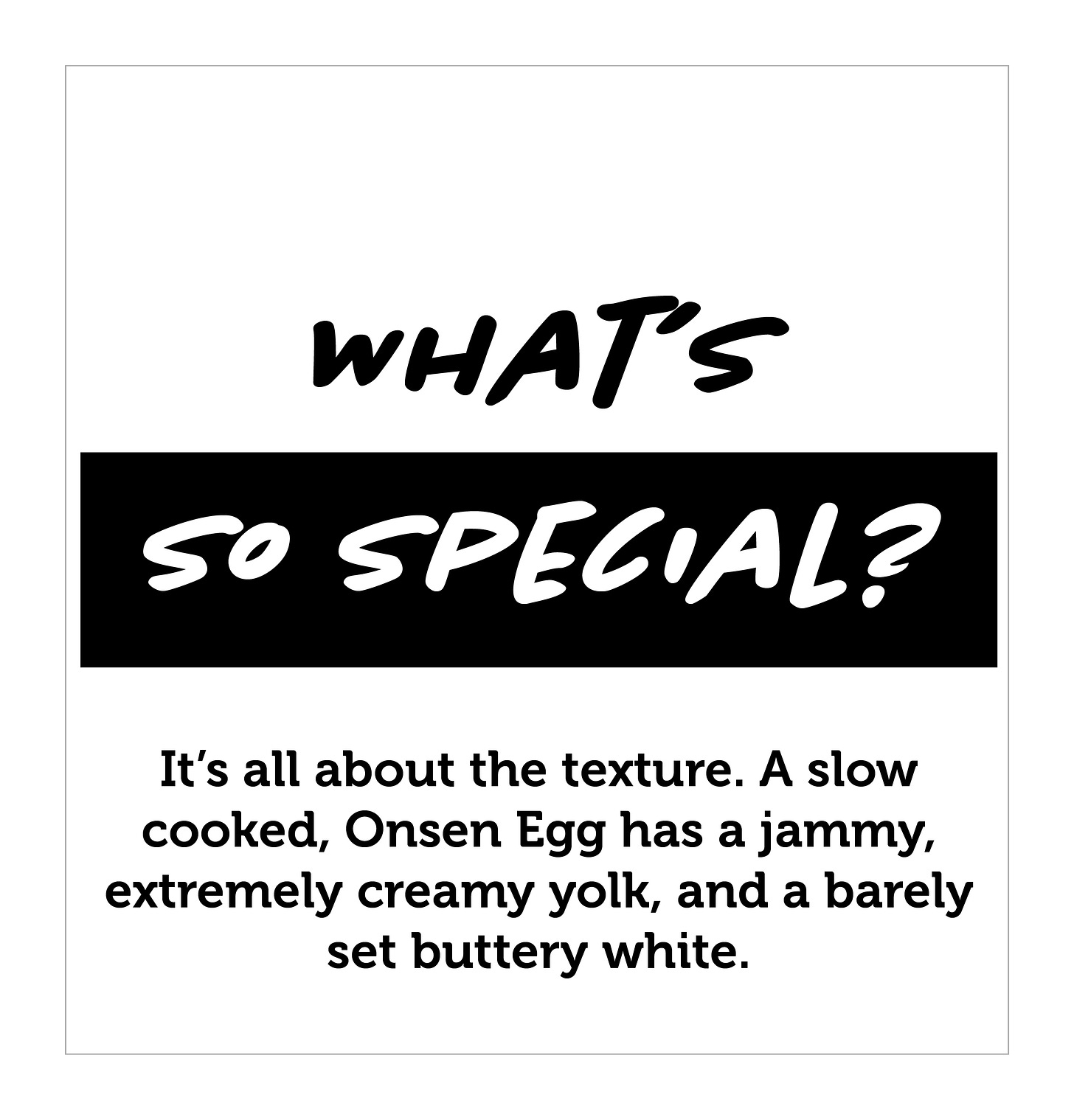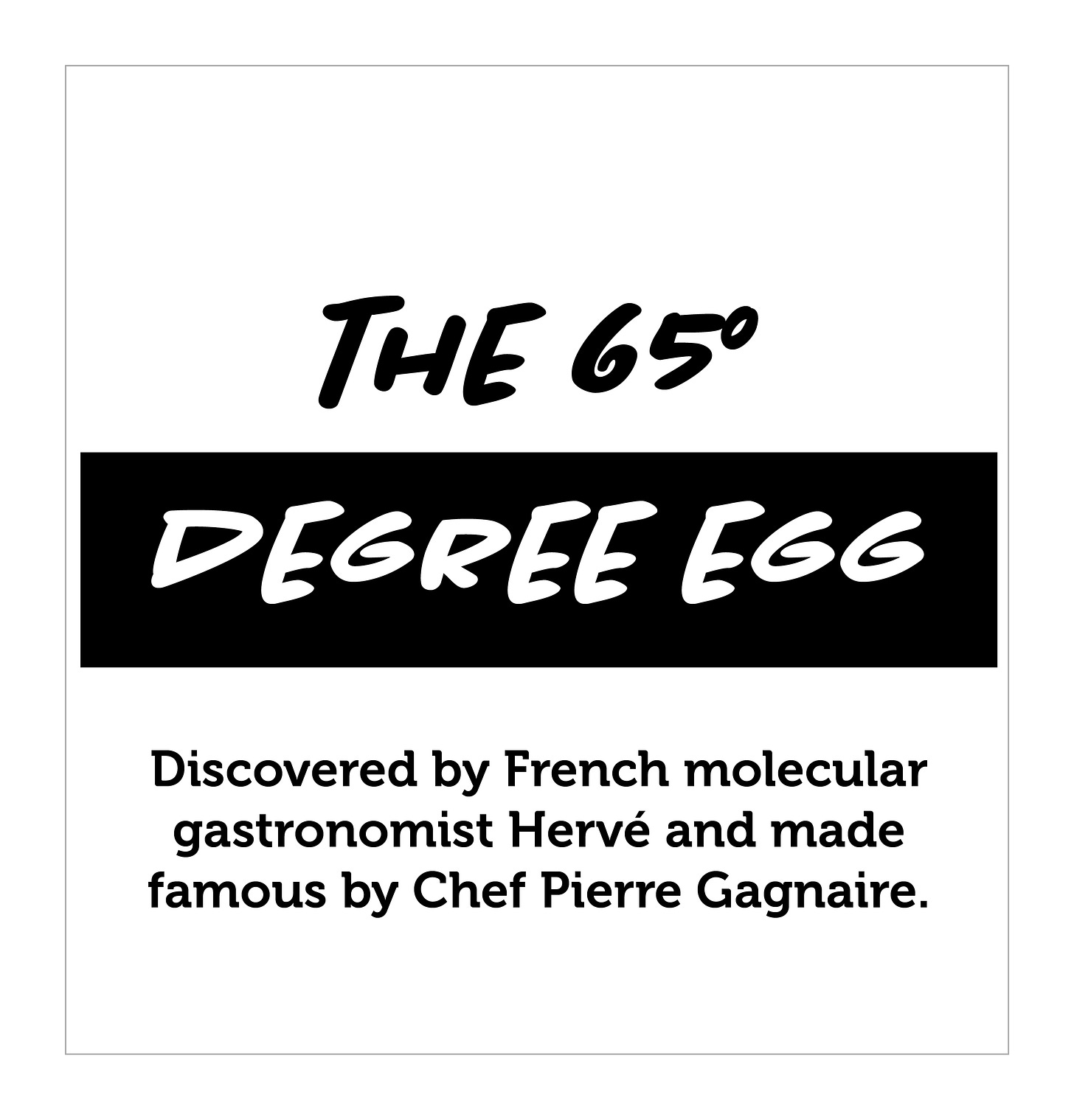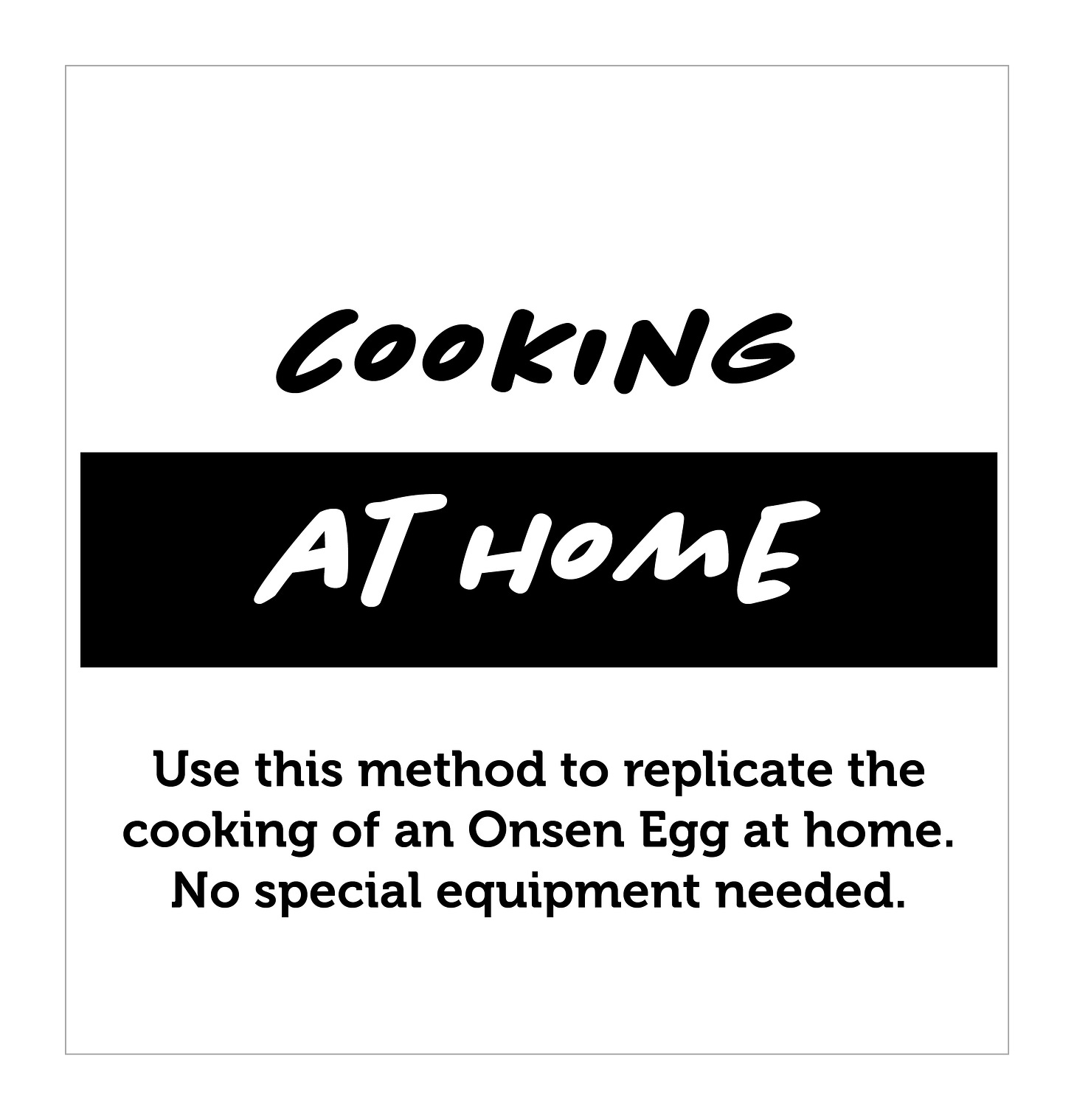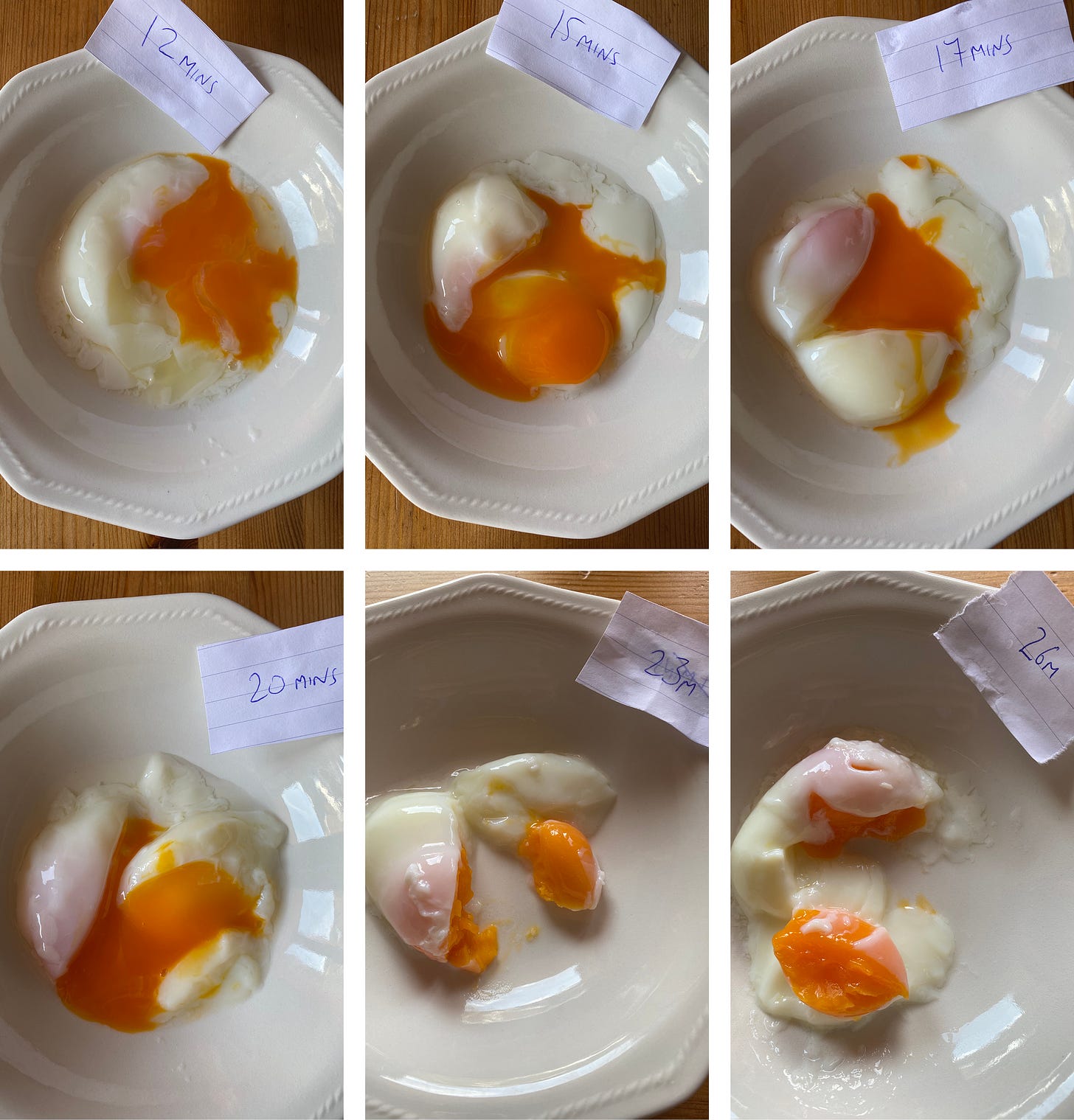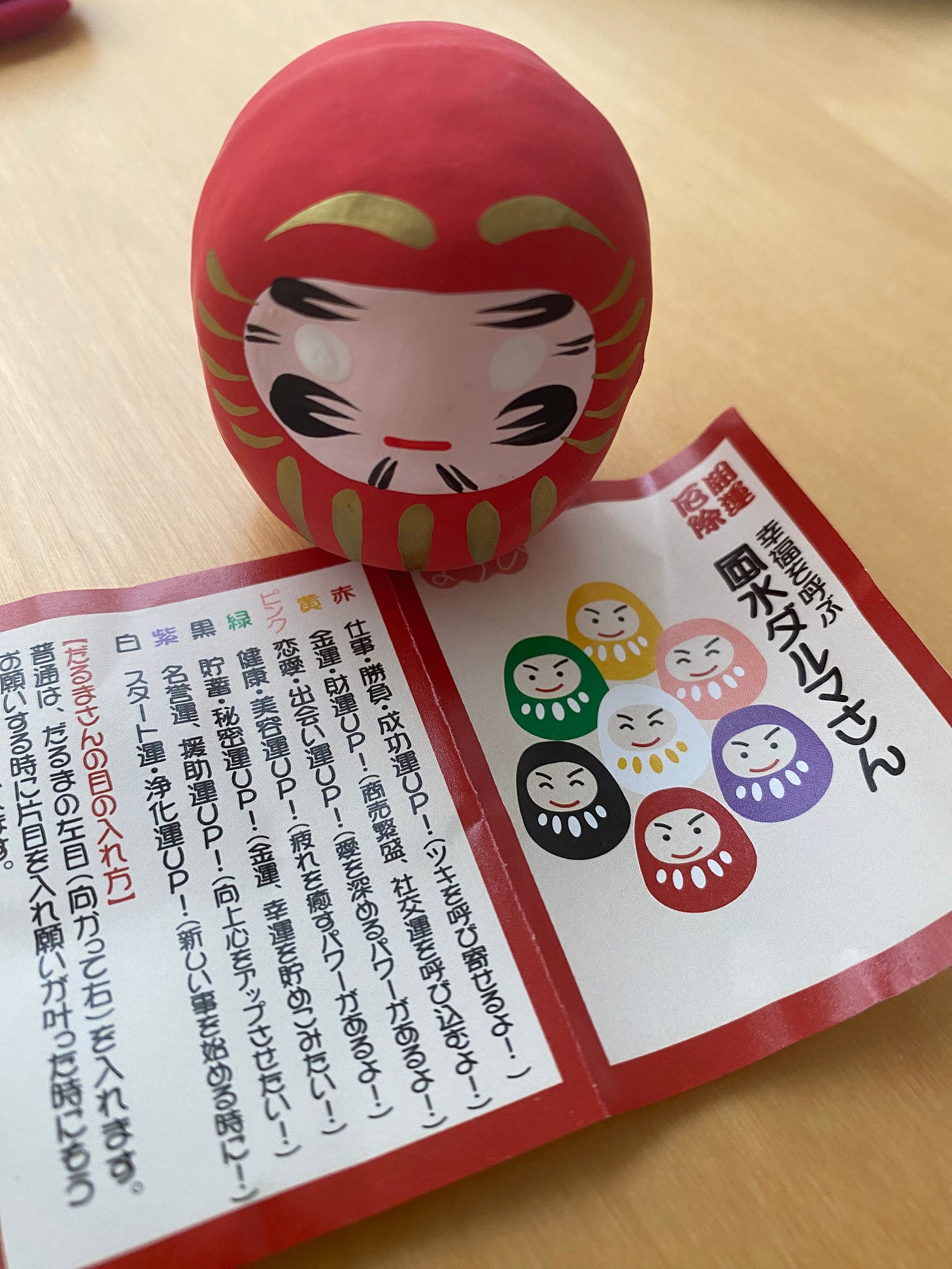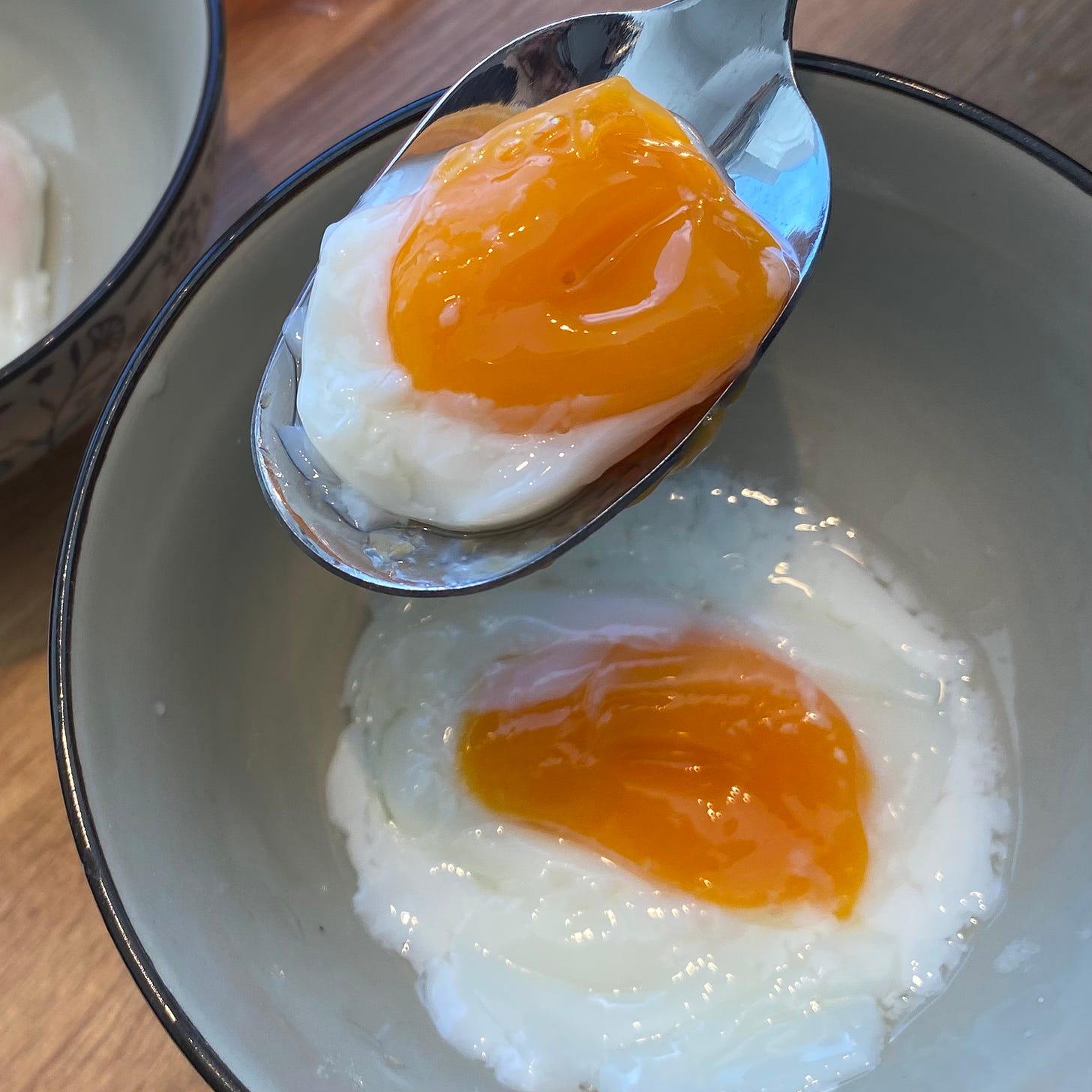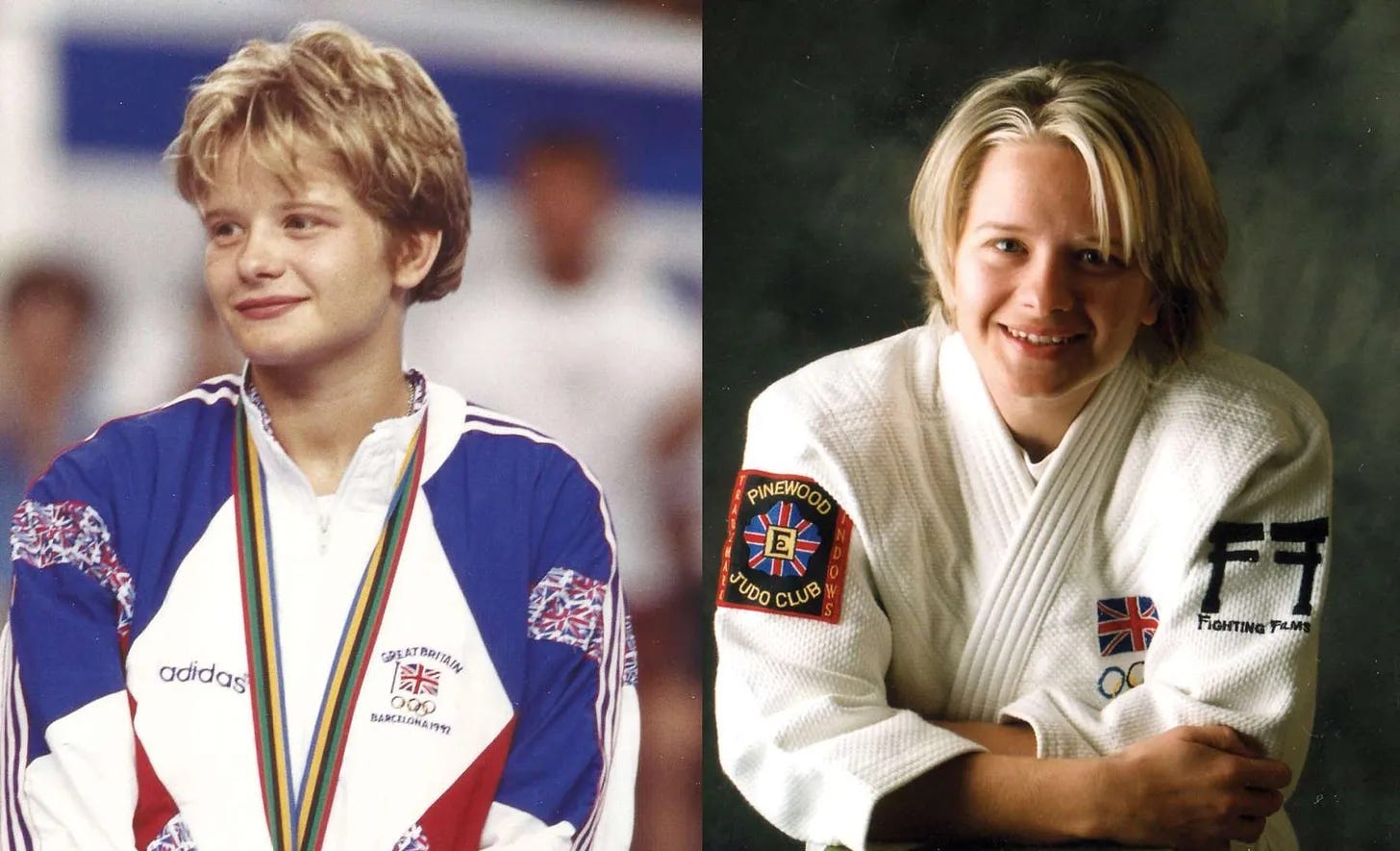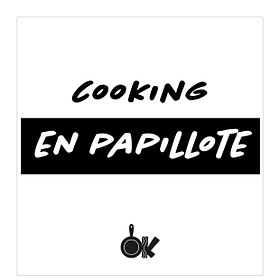THE ONSEN EGG may just be the perfect egg of all time. A creamy-extremely-jammy yolk and a buttery-yet-silky set white. The Japanese mastered the art of slow-cooking eggs thousands of years ago cooking them in hot springs called onsens. But you don’t need to go to Japan to cook the perfect egg…
You don’t need an onsen. You don’t even need a thermometre. Below, is a method you use at home and we will get onto that in just a minute.
But as it happens I’m in Japan, in a village called Nozawa Onsen, with 13 natural hot volcanic springs, so let’s start there, cooking eggs using the century-old traditional Japanese method.
By the time I appear at the steaming onsen, with my eggs, it’s already busy with locals cooking their supper. A Japanese lady tells me 21 minutes is the sweet spot, where the yolks are oishi (delicious). So I lower my eggs into the steaming water and go off for a soak myself.
Turns out humans cook way faster than eggs. I’m done in eight minutes; bright pink and cooked through, and back to pull my mesh of eggs out in plenty of time. Back home I crack one open. The Japanese lady is right; they are very, very oishi.
So let’s get into it. Why bother? And how can you cook Onsen Eggs easily at home?
Video: Cooking Onsen Eggs in Japan.
GETTING HEALTHY BITE BY BITE
We get healthy bite by bite, in a series of small changes, that together lead to a bigger result.
Why bother? It’s an easy one to answer.
Eggs are little bundles of nutritional goodness. Complete protein packages, and cooked and prepared in minutes. Pretty much the perfect food; containing plenty of different nutrients. A medium egg contains 6g protein, 5g of fat and about 80 calories.
The texture of these eggs is exceptional. The onsen egg is known as “the perfect egg” to chefs around the world, and the art of preparing this perfect egg has been examined by many Michelin-starred restaurants.
Easy to batch cook for the week. Cook a dozen, store them in the fridge (shell on) and you have them ready to use during the week. Add them to pasta for a instant carbonara, plop them into Ramen, spread them on avocado toast…
OK, let’s delve deeper into the why…
BECOMING A BETTER COOK
By understanding the how’s and why’s we gain more confidence in the kitchen.
Why is the time and temperature so important?
Because it creates the texture.
An Onsen Egg is an egg cooked at a low temperature of around 63-69°C (145°F-149°F) degrees for between 20-45 minutes.
Yolks and whites solidify at different temperatures, with the protein molecules in each denaturing at slightly different temperatures.
Hence why, sometimes when we boil an egg, the white is still snotty when the yolk is perfect (yeah, we’ve all been there), or even worse, the white is set but the yolk is hard (breaks your heart).
Yolks solidify at 158°F / 70°C ; Whites at 176°F / 80°C .
We can use this information to cook eggs perfectly. By keeping the temperature under 69°C (145°F) degrees the yolk won’t solidify, but over time they will go from runny, to creamy, to jammy or if you’re Japanese from oishi, to very oishi, to exceptionally oishi.
It’s this low-temperature cooking that makes the onsen eggs special.
But what is the perfect temperature v time combo?
You might have heard of it: the 65°C degree egg? It’s become kinda famous, and has made its way onto menus in chic restaurants: L’oeuf à soixante-cinq degrés.
Discovered by French molecular gastronomist Hervé and made famous by Chef Pierre Gagnaire who told the world: “An egg cooked at 65°C degrees (149°F) for 25 minutes will be unmatched in flavour and texture.”
The search for the perfect temperature and time combination goes on, with chef’s now lauding: 63°C (145°F) for anywhere been 45 minutes and 90 minutes.
How do they cook an egg in a professional kitchen?
To cook a 65°C egg, you’ll need an immersion circulator, a device that heats and circulates water maintaining precise and even temperatures. If you want to experiment, here is an in-depth guide to cooking eggs in water baths, or my advice would be to start with the tried and tested:
Hervé and Chef Pierre Gagnaire : 65°C (149°F) for 25 minutes, Or try: 63°C (145°F) for 60 minutes.
Of course, perfect is subjective. And the only parameter that really matters is finding your perfect.
If you haven’t got an immersion circulator, or even a thermometre don’t fret - here’s how you can get a similar effect at home.
Cooking Onsen Eggs at Home
For six eggs
1 litre of water into a pot and bring to boil.
Take off the heat.
Add 200 ml of tap water (room temp) to the boiling water.
Gently add the eggs (shell on) and cover.
Leave for anywhere between 17 and 30 minutes - depending on how you like your eggs.
Keep in Mind
This method relies on the water falling through the range of temperatures from approx 80°C to 60°C.
An important factor to bear in mind is the size of your egg.
Start with eggs at room temperature rather than refrigerator cold.
Here are the results from a quick test I did for different times from 12 minutes through to 26 minutes cooked with this method. Except the 12 minute (which was raw, and blurrrghhh) all were tasty. My favourite? The 20 minute. Very close second being the 23 minute.
12 minute - raw white, rawish tasting yolk. blurgghh.
15 minute - yolk tastes like a boiled egg, white very loose
17 minute - yolk beginning to get creamier, white silkier and tastier
20 minute - yolk creamy but still runny, white is silky and tasty.
23 minute - yolk jammy, no longer runny, white silky and tasty.
26 minute - no noticeable change from the 23 minute egg.
Prize up for grabs!
I challenge you to find your perfect time, and for a bit of fun, there is even a prize up for grabs for one reader. Not any old prize, I might add. This prize will bring you luck, and we all need some of that! In Japan, the Daruma Doll is a symbol of good luck, believed to ward off evil.
Prize: Win a Japanese Daruma Doll (pictured above, about the size of an egg!)
Challenge: Your challenge is to cook an Onsen egg and write your preferred time in the comments below.
How to Peel an Onsen Egg
Perhaps one of the most useful tips I can give you is how to peel an onsen egg, so it and all your hard work doesn’t fall apart.
Step 1: Tap and Peel
Tap the large end of the egg on a flat surface to gently crack the shell. Peel away a circle of the shell.
Step 2: Tip
Tip the egg into a clean bowl. You will see the loose white run out first, then out with plop the Onsen egg.
Keep in Mind
An egg actually has two whites (learn something new every day!), the tight white and the loose white. The loose white sits outside the membrane, is watery and cooks at an even higher temperature and so will be very runny.
Step 3: Separate
Use a large spoon to scoop the egg from the loose white. You can tip it away the loose white (or eat it, if it doesn't bother you.)
Step 4: Eat
Best eaten warm, but the eggs will store in their shells in the fridge for 5-7 days. To rewarm place them in warm water (not over 60 degrees) for a few minutes.
How do you like your eggs?
Japanese style: Onto warm sticky rice, seasoned with rice vinegar, mirin and soy, and topped with sliced spring onion.
Italian Style: If the egg yolk is runny, use on pasta along with crispy bacon or ham, for an instant carbonara.
Aussie Style: Onto avocado toast, and sprinkled with toasted sesame seeds.
Until next week, enjoy your eggs!
Nicola
Olympian Kitchen is written by Nicola Fairbrother MBE, 8th Dan, Olympic silver medallist.
More about my work and me. I’m Nicola Fairbrother. I’m a double Olympian (Barcelona 1992 Silver and Atlanta 1996 5th) and a trained chef (Leiths Professional Diploma) and have completed a 100 day chef-stage in Spanish Michelin kitchens.
My Recommendation: The Ramen Bowl
For more Japanese cooking, I can highly recommend reading The Ramen Bowl, which deep dives into all things Japanese including how to pick the right Soy Sauce, how to make the delicious tamago sandwich and of course tips on how to make Ramen.

